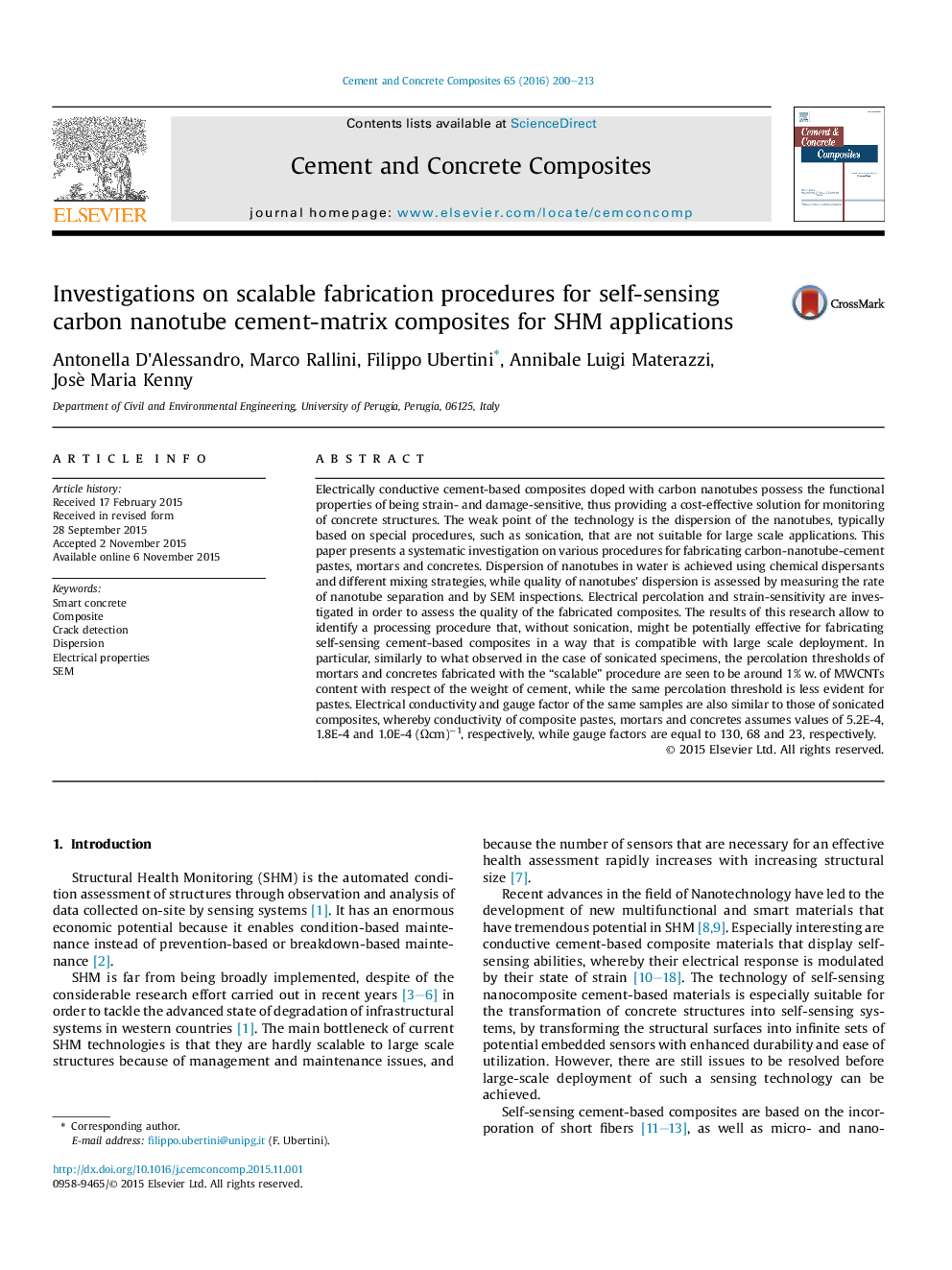| Article ID | Journal | Published Year | Pages | File Type |
|---|---|---|---|---|
| 1454424 | Cement and Concrete Composites | 2016 | 14 Pages |
Electrically conductive cement-based composites doped with carbon nanotubes possess the functional properties of being strain- and damage-sensitive, thus providing a cost-effective solution for monitoring of concrete structures. The weak point of the technology is the dispersion of the nanotubes, typically based on special procedures, such as sonication, that are not suitable for large scale applications. This paper presents a systematic investigation on various procedures for fabricating carbon-nanotube-cement pastes, mortars and concretes. Dispersion of nanotubes in water is achieved using chemical dispersants and different mixing strategies, while quality of nanotubes' dispersion is assessed by measuring the rate of nanotube separation and by SEM inspections. Electrical percolation and strain-sensitivity are investigated in order to assess the quality of the fabricated composites. The results of this research allow to identify a processing procedure that, without sonication, might be potentially effective for fabricating self-sensing cement-based composites in a way that is compatible with large scale deployment. In particular, similarly to what observed in the case of sonicated specimens, the percolation thresholds of mortars and concretes fabricated with the “scalable” procedure are seen to be around 1% w. of MWCNTs content with respect of the weight of cement, while the same percolation threshold is less evident for pastes. Electrical conductivity and gauge factor of the same samples are also similar to those of sonicated composites, whereby conductivity of composite pastes, mortars and concretes assumes values of 5.2E-4, 1.8E-4 and 1.0E-4 (Ωcm)−1, respectively, while gauge factors are equal to 130, 68 and 23, respectively.
